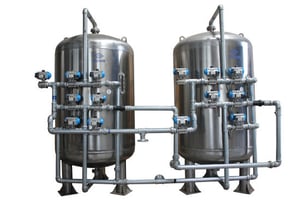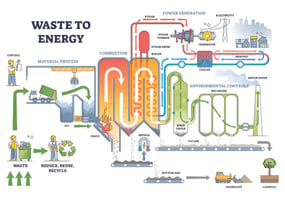Discover how water-efficient energy management can revolutionize sustainability efforts.
Ensuring Safe Water in Building Management: The Importance of Water Disinfection and Effective Treatment Methods
Ensuring high-quality water in buildings is not just a matter of convenience but a critical health necessity. Effective water management practices can significantly enhance water quality, reduce health risks, and ensure regulatory compliance.
The Importance of Water Quality in Buildings
Water is a fundamental necessity for all human activities, making its quality a top priority for both residential and commercial buildings. Poor water quality can lead to serious health issues, including gastrointestinal illnesses and long-term chronic conditions. Ensuring clean and safe water is crucial for maintaining public health and well-being.
High-quality water is also essential for the proper functioning of building systems, such as heating and cooling systems, plumbing, and sanitation facilities. Contaminated water can cause corrosion, scaling, and biofilm formation, leading to increased maintenance costs and potential system failures.
Challenges in Managing Building Water Systems
Managing water systems in buildings comes with several challenges. One of the primary difficulties is the complexity of the water distribution network, which can have multiple points of contamination. Regular monitoring and maintenance are required to ensure the integrity of the system.
Another challenge is the variability in water quality due to external factors such as changes in the source water, seasonal variations, and potential contamination from nearby industrial activities. Facility managers must stay vigilant and be prepared to address these fluctuations promptly.
Effective Water Disinfection Methods
Several effective water disinfection methods can be employed to ensure the safety of building water supplies. Chlorination is one of the most widely used methods, offering a cost-effective solution for eliminating pathogens. However, it requires careful management to avoid the formation of harmful by-products.
Ultraviolet (UV) disinfection is another effective method that uses UV light to inactivate microorganisms. This method is chemical-free and does not produce harmful by-products, making it an attractive option for many facilities. Other methods include ozonation and advanced filtration techniques, each with its own set of benefits and considerations.
Best Practices for Residential and Commercial Facilities
Implementing best practices in water management is crucial for maintaining high water quality in both residential and commercial settings. Regular inspection and maintenance of water systems are essential to identify and address potential issues before they escalate.
Water quality testing should be conducted periodically to monitor for contaminants and ensure compliance with regulatory standards. Additionally, facilities should develop and implement a water management plan that includes risk assessments, preventive measures, and emergency response protocols.
Innovative Technologies in Water Management
Advancements in technology are providing new tools and methods for optimizing water management in buildings. Smart water management systems, which utilize sensors and IoT devices, allow for real-time monitoring and data analysis. These systems can detect anomalies and provide actionable insights to facility managers.
Another innovative technology is the use of advanced filtration systems, such as reverse osmosis and nanofiltration, which can effectively remove a wide range of contaminants. These technologies, combined with traditional methods, offer a comprehensive approach to ensuring high-quality water in buildings.


